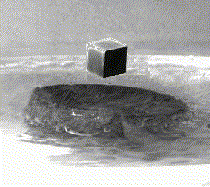The J. Stefan Institute home page
is located at http://ijs.muzej.si/

 Solid State Physics (F5)
Solid State Physics (F5)
Head: Prof. Robert Blinc, member of the Slovenian Academy
of Sciences and Arts
Research Staff: 62
The Solid State Physics Department comprises of :
The main subjects of our research :
- liquid crystals (ferroelectric and antiferroelectric liquid crystals
external fields and restricted geometries, volume stabilized
ferroelectric liquid crystalline gels, polymer dispersed liquid
crystals),
- incommensurate systems,
- proton and deuteron glasses and disordered ferroelectrics,
- fast protonic conductors
- synthesis of new fullerene materials (charge transfer complexes including
magnetic fullerenes, fullerene nanostructures and organic fullerene derivatives)
- fullerene magnetic properties, especially TDAE-C60 and related
materials,
- optical studies of high temperature superconductors
- thin films, surfaces, nanostructures and modulated phases,
The techniques used are:
- one and two dimensional NMR and NQR,
- nuclear double resonance,
- electron paramagnetic resonance,
- MR imaging in high and low magnetic fields,
- dielectric spectroscopy
- Raman spectroscopy, including time-resolved spectroscopy
- infrared spectroscopy
- Rayleigh spectroscopy,
- nonlinear optical spectroscopy
- femtosecond time resolved optical spectroscopy,
- transmission electron microscopy,
- scanning tunneling microscopy,
- atomic force microscopy.
The department cooperates with many foreign institutes and universities:
- Liquid Crystal Institute, Kent, Ohio, USA
- University of Utah, Salt Lake City, Utah, USA
- Montana State University, Bozeman, Montana, USA
- University of California at Berkeley and Santa Barbara, California,
USA
- NIST, Gaithersburg, USA
- University of Regensburg, Germany
- Institute of Experimental Physics, Vienna University, Vienna, Austria
- University of Saarbruecken, Germany
- ETH, Zuerich, Switzerland
- NRC Demokritos, Athenes, Greece
- University of Waterloo, Waterloo, Ontario,
Canada
- J. Guttenberg University, Mainz, Germany
- Acadia University, Wolfville, N.S., Canada
- Jagellonian University, Krakow, Poland
- University of Nijmegen, Nijmegen, The Netherlands
- Institute of Molecular Physics, PAN, Poznan, Poland
- Imperial College, London, GB
- Institute of Crystallography, Russian Academy of Sciences,
Moscow, Russia.
In the autumn of 1993 we also started the work in the
Centre for Natural Sciences and Technology which is organized
as a technological and infrastructural base for applied research
and technology transfer for the Slovenian high tech industry.
Applied research is done particularly in the fields of
liquid crystal displays, laser development, thin film and
solid state sensors, optical microlithography, optical incremental
encoders as well as MR microimagers and NMR spectrometers.
The laboratory of MR imaging is applying magnetic resonance
microscopy techniques.
![[plant stem image]](/images/ijs-dept-f5.gif)
The figure shows a transverse cross-section of the plant stem.
The image resolution is 60 microns per pixel and the captured
image matrix size was 256 x 256 pixels.
Research projects
financed by the Ministry of Science and Technology
(titles in Slovene language)

 Solid State Physics (F5)
Solid State Physics (F5)
 Solid State Physics (F5)
Solid State Physics (F5)![[plant stem image]](/images/ijs-dept-f5.gif)